Mclaren f1 lm 1995
Содержание:
- McLaren MP4/2 1984
- McLaren M23 1974
- McLaren MP4/2C 1986
- McLaren MP4-13 1998
- Бензиновый и электрический моторы
- McLaren MP4-14 1999
- Disclosures of your information
- McLaren MP4/5 1989
- McLaren MP4/7 1992
- McLaren M26 1977
- Кузовные новшества
- McLaren MP4-12 1997
- McLaren F1 сегодня
- McLaren MP4/4 1988
- McLaren M23 1976
- Спортивные достижения и модификации F1
- McLaren MP4/2B 1985
- История появления McLaren F1
- Use of cookies on our website
- Commitments
- What to do if you don’t want cookies to be set
McLaren MP4/2 1984
It quickly became apparent that in the MP4/2 Prost and Lauda had the tool to dominate the 1984 season from start to finish. Over the course of the season Prost was to win seven races to Lauda’s five.
If the car had any weaknesses it was in the areas of braking and the gearbox. Many also felt that the decision to switch to flat-bottomed cars effectively robbed the team of engine potential.
Even compromised in this way, the MP4/2 was to give McLaren those 12 wins from 16 races, lead Lauda to his third Drivers’ World Championship and massacre the opposition in winning the Constructors’ Cup by an incredible 86 points. It provided us with a near-perfect season, and everyone else a warning not to be ingnored.
McLaren M23 1974
That year saw the creation of the Texaco-Marlboro McLaren superteam, as Emerson Fittipaldi joined Denny Hulme in the new red and white M23s.
Compared to the previous season the M23 was improved by fitting a new bellhousing spacer between the engine and gearbox. The rear wing was also brought forward by 10 inches to comply with the new regulations.
In a year characterised by the battle with an emergent Ferrari team, Niki Lauda and Clay Regazzoni, Emerson won in Brazil, Belgium and Canada to head into the final race neck-and-neck with Regazzoni.
Emerson finished fourth to clinch his second world title, and the first-ever World Championship for McLaren. That day was also historic for another reason: Denny’s final Grand Prix appearance.
McLaren MP4/2C 1986
Wearing the reigning Champion’s number 1 on the nose of his car, Alain Prost won four Grand Prix races and finished on the podium on five other occasions in 1986. It was this consistency rather than outright race victories that won him the title for the second year in succession.
The car’s overall dimensions remained unchanged, but maximum power was up to something approaching 800bhp at 12,000rpm.
Prost clinched another Drivers’ World Championship in emphatic style with a win at Adelaide. McLaren finished second to Williams in the Constructors’ title. At the end of the season John Barnard decided to sell his shareholding in the team, and to head for pastures new.
McLaren MP4-13 1998
The development of the Mercedes-Benz FO 110G V10 engine together with a switch to Bridgestone tyres and a real rekindling of team spirit once Mika Hakkinen discovered for himself the joys of winning at the highest level, quickly put McLaren back into a dominant position on the grid.
The finished car was a neat and tidy package .Still in place was the previous season’s low-level nose design but the front suspension was quite different with inboard vertical dampers and torsion bars.
Driving superbly all year, Mika Hakkinen won eight races and clinched the Drivers’ World Championship with a flawless flag-to-flag victory in the Japanese Grand Prix at Suzuka. With Coulthard third in the standings, the team also took the Constructors’ title for the first time since 1991.
Бензиновый и электрический моторы
В роли классического двигателя выступает новый бензиновый V6 3-литрового объема M630. Ему досталось два турбокомпрессора в развале блока. Он с непосредственным впрыском давлением 350 бар, плюс установлен фильтр твердых частиц.
Мотор Artura полностью алюминиевый, поэтому весит всего 160 кг. Отдача двигателя составляет 585 лошадиных сил и 584 H*m крутящего момента. Из редкого – внутренние контуры ГБЦ и всего блока распечатали на 3D принтере, что улучшило охлаждение.
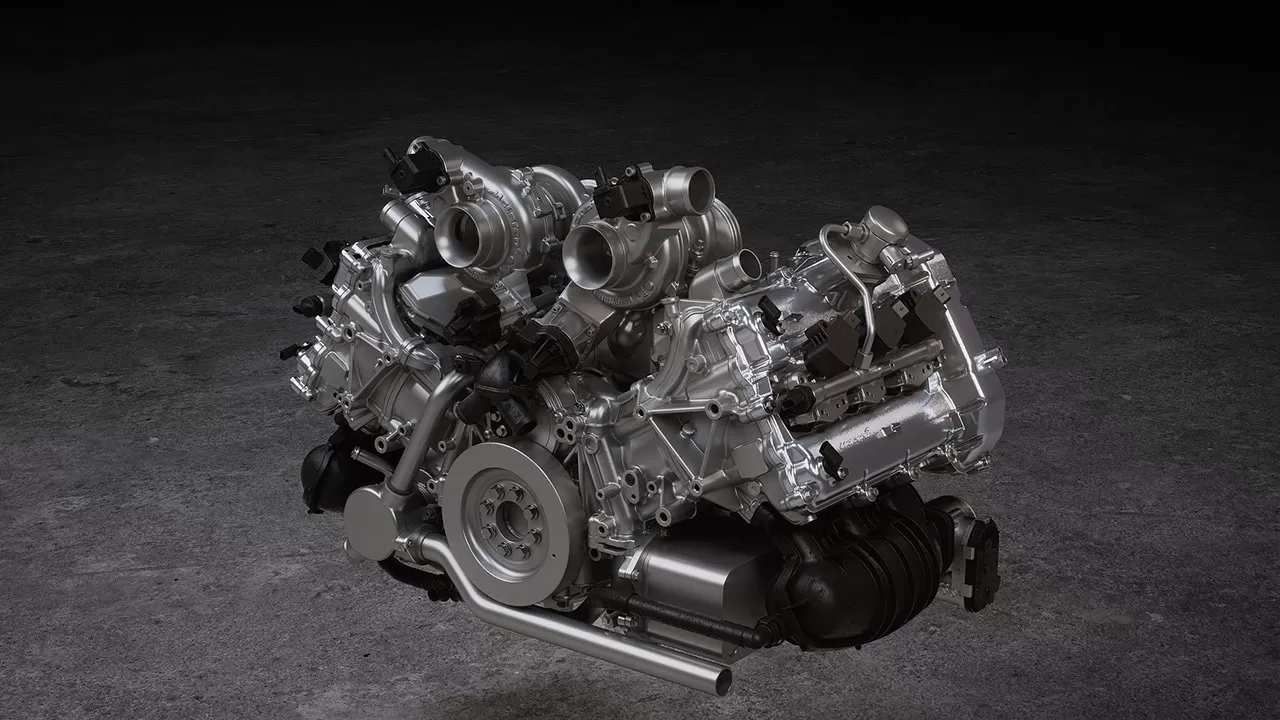
В роли вспомогательного двигателя выступает электромотор на 95 лошадей и 225 H*m момента. Суммарно получается 680 лошадей и 720 единиц момента.
Питается электромотор от батареи емкостью 7,4 кВт*ч, которая заряжается от двигателя при выборе режима. Также есть привычная зарядка кабелем EVSE, который пополняет 80% за 2,5 часа. Весит он всего 15 кг и стоит на передней оси.
ДВС стыкован с 8-ступенчатым роботом SSG с двумя дисками сцепления. Задняя передача работает только от электромотора – странное решение, хотя также сделано в Ferrari SF90.
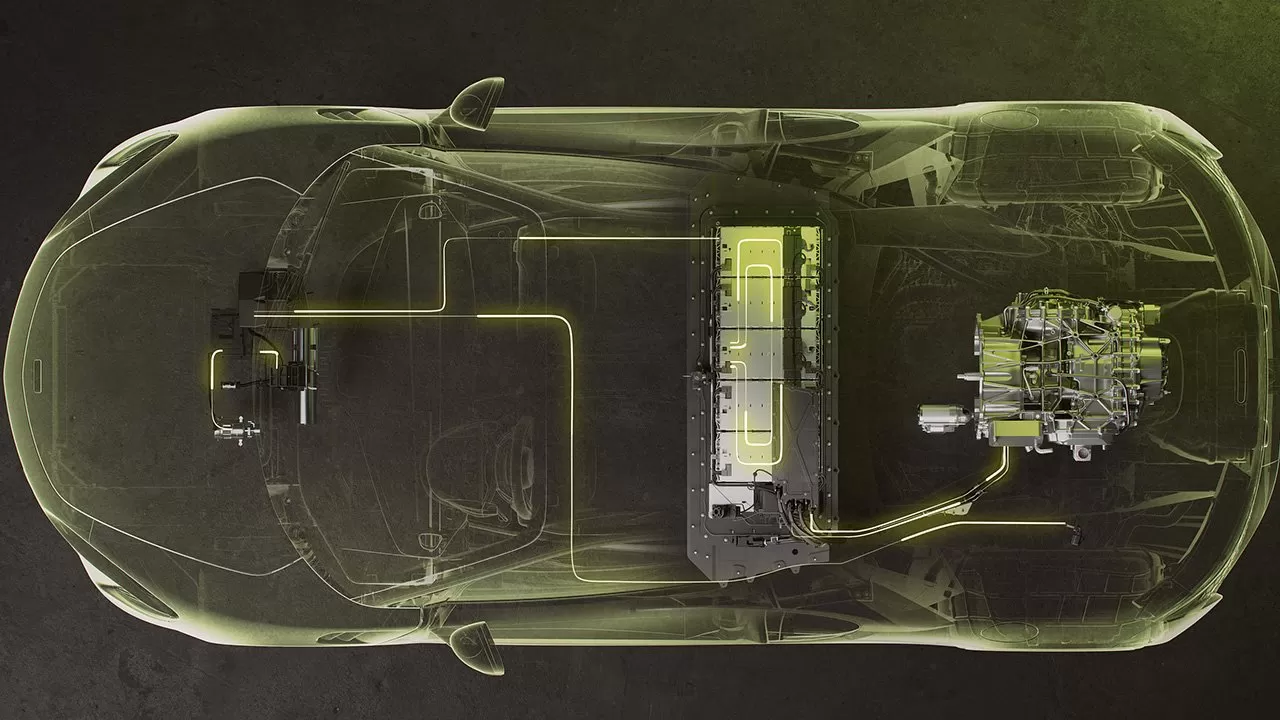
На электромоторе можно проехать всего 30 км, а максимальная скорость ограничена 130 км/ч.
McLaren MP4-14 1999
One of the most ambitious designs ever. Along with a lighter, lower V10 from Mercedes-benz, it also showcased a host of new innovations brought in by Adrian Newey. He relocated the oil tank and hydraulic system and fitted a new, shorter gearbox.
The increased complexity and lower weight did not at first inspire complete confidence on the part of David Coulthard and Mika Hakkinen. As a natural consequence of its more complex design, the MP4-14 took longer to get right.
Seven wins out of 16 races was good, but not good enough. West McLaren-Mercedes was still the team to beat but while Mercedes-Benz had demonstrated outstanding levels of mechanical reliability, the car never quite measured up to it.
Disclosures of your information
Your information may be passed to and used by all McLaren Group companies. We will never pass your personal data to anyone else, except for any successors in title to our business and suppliers that process data on our behalf both in the UK and abroad. We may also use and disclose your information in aggregate for marketing purposes such as remarketing. In this instance a cookie may be placed on your machine so that adverts may be served and tailored to you when you are on other websites, based on the content you have browsed on our websites (or if you have engaged with previous adverts served to you). This cookie will not in any way identify you individually. More information can be found on our . The aggregate information may also be used for strategic development purposes.
McLaren MP4/5 1989
1989 meant all change for McLaren as the 3.5-litre normally aspirated Formula 1 came into force. Few would have predicted that the first season of the non-turbo era would match the incredible results of the previous year, with McLaren walking away with further Drivers’ and Constructors’ Championships.
McLaren soon began to dominate the season, albeit not quite to the degree it had the previous year as the MP4/5 was not deviod of problems.
With Senna’s car carrying the World Champion number 1, Alain Prost in number 2 only won four races to Senna’s six, but took his third Drivers’ title by a 16-point margin. McLaren also clinched the Constructors’ World Championship for the second year in a row.
McLaren MP4/7 1992
The MP4/7 featured McLaren’s own hydraulically operated gearbox. It also featured fly-by-wire throttle control.
It spent extra hours in the wind tunnel and finally made its debut at the third race in Brazil. Attention to aerodynamic detail was evident in its multi-component rear wing.
Once racing got underway, however, it was clear that there was still work to do. Senna complained of unpredictable handling. Fortunately his was fully committed and won in Monaco, Hungary and Italy. Berger took wins in Canada and Australia. McLaren finished runner-up in the Constructors’.
Senna finished fourth overall in the Drivers’ on 50 ahead of Berger. For McLaren, however, after such a historic run of spectacular victories, it was bitter disappointment.
McLaren M26 1977
Despite making a brief debut at the Dutch GP in 1976, the M26 was still under development at the start of 1977 and teething problems meant reigning World Champion James Hunt continued to rely on the older M23 for the first four rounds.
James initially found it unbalanced and unpredictable. However, the breakthrough came at Silverstone where James won from pole. He also proved dominant at the Japanese GP at Mount Fuji. This would be Hunt’s final Grand Prix victory.
It left him fifth in the World Championship with 40 points, a long way adrift of Lauda on 72, and 15 ahead of sixth-placed Mass. The success would also be McLaren’s last for three and a half years.
Кузовные новшества
Проблема гибридных суперкаров в весе, все-таки аккумуляторы весят много. Поэтому МакЛарен решил разработать новую платформу под гибридную установку. Для этого собрали платформу McLaren Carbon Fibre Lightweight Architecture с облегченными элементами.
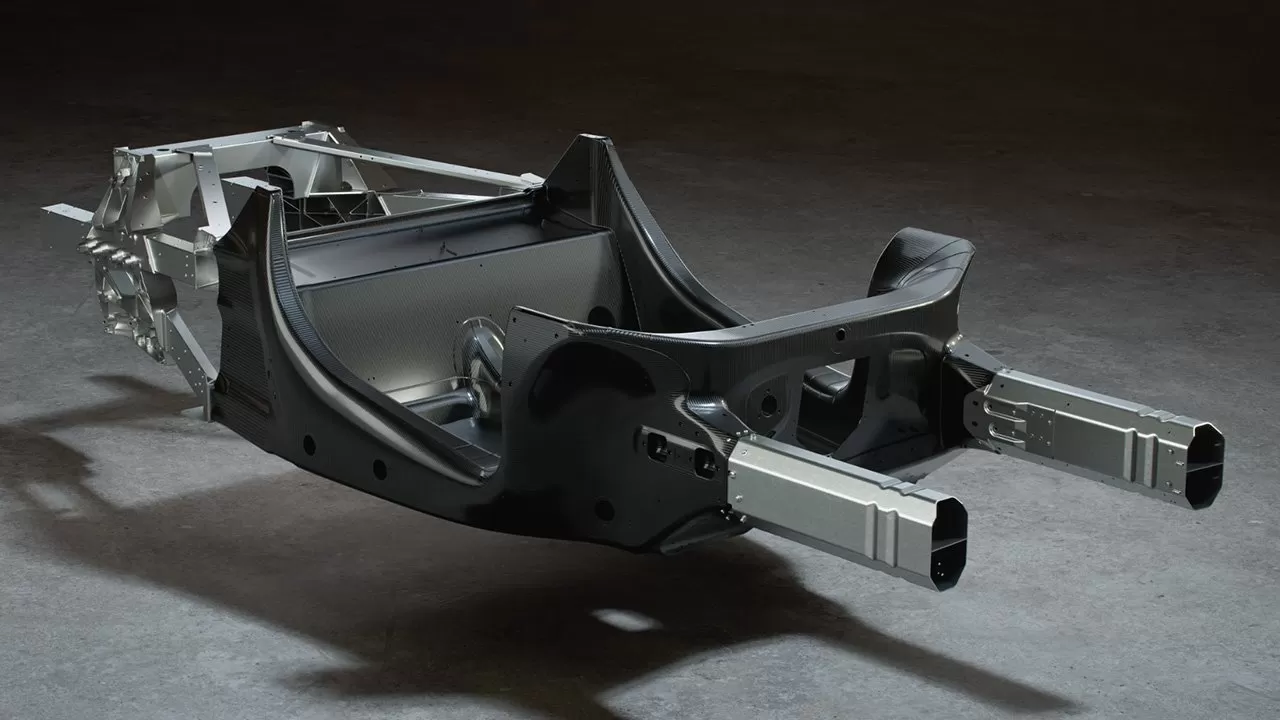
Монокок сделан из 4 новых видов карбона и новой эпоксидной системы, что обеспечило вес в 82 килограмма. Подрамники платформы вкруг алюминиевые. Их можно легко открутить в случае повреждения и заменить новыми.
Также поработали над весом остальных узлов, которые мы обсудим отдельно. В итоге сухая масса составила 1395 кг, что всего на 46 кг больше McLaren 570S.
Дизайн Artura вы можете рассмотреть на фотографиях. Архитектура дизайна мало отличается от всего модельного ряда. Есть масса измененных мелочей, но общая картина осталась прежней. Разбирающийся человек с первого раза вряд ли скажет название модели.
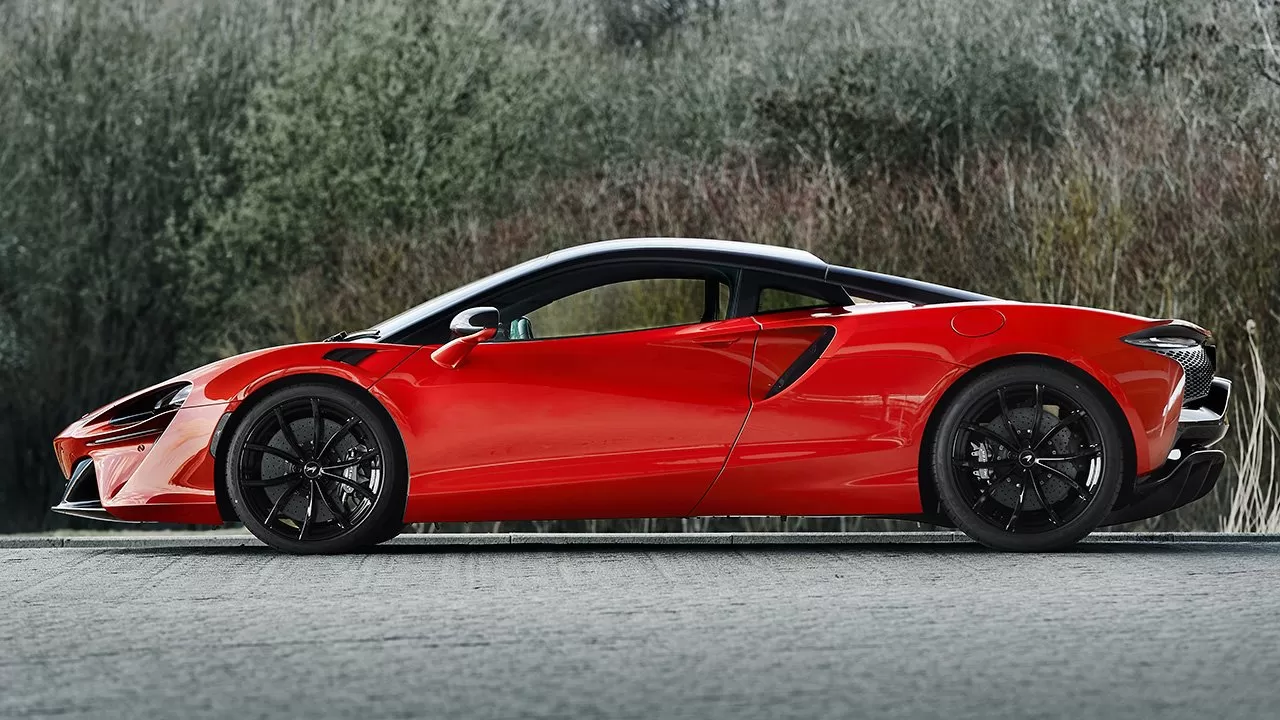
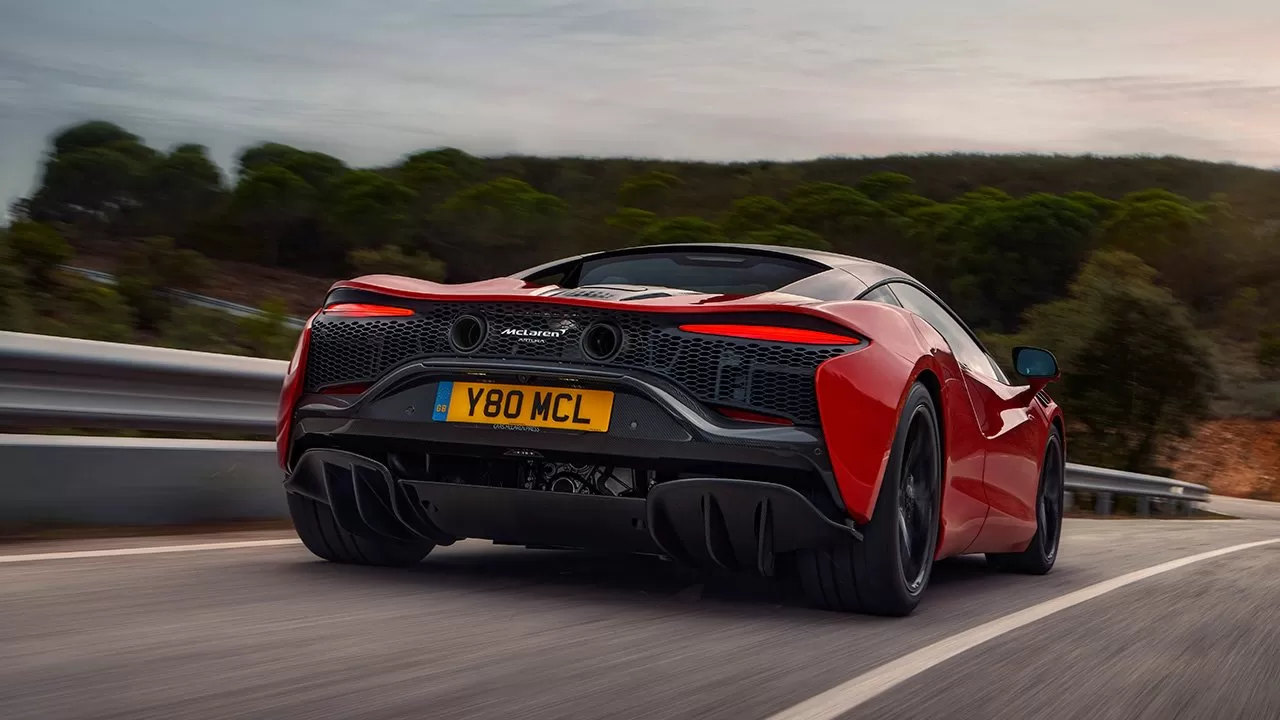
Для управляемости здесь установлены разноразмерные колеса: спереди – 235/35/R19, сзади –295/35/R20. Стоит даже разная модель резины – Pirelli P Zero и P Zero Corsa соответственно.
Габариты купе:
- длина – 4539 мм;
- ширина – 1913 мм;
- высота – 1193 мм;
- колесная база – 2640 мм.
McLaren MP4-12 1997
A new era began for McLaren-Mercedes with the arrival of West as title partner and Adrian Newey from Williams.
Together with a Mercedes-Benz FO 110E engine featuring an all-new sand-cast aluminium alloy block , the MP4-12 also had a lower centre of gravity than its predecessor.
The results of these improvements were not overwhelming, but what mattered was that McLaren was once again establishing itself as a GP winner.
David Coulthard won two races; at the opening round in Melbourne and the Italian GP in September. Moreover in the final race of the 1997 Formula 1 season, Mika Hakkinen took his maiden Grand Prix win.
With resources already being poured into the following year’s effort, McLaren was back on track to become the pacesetter.
McLaren F1 сегодня
Экономический спад середины 90-х и, без сомнения, сильно завышенная цена не позволили англичанам выпустить более сотни экземпляров, включая разные модификации и чисто гоночные версии. В Уокинге заявляют, что ровно сотня машин и была произведена, хотя информированные источники сообщают, что сток как минимум из десяти экземпляров F1 все еще остается на заводе. Так что, если вы когда-нибудь накопите на McLaren F1, нет ничего проще: обращайтесь туда, и вам непременно найдут абсолютно новую машину, без пробега.
Стоит также заметить, что все проданные автомобили до сих пор поддерживаются запасными частями и технически сопровождаются. Завод McLaren продолжает обновлять конструкцию всех проданных F1, и если вы, скажем, случайно разобьете свой F1, завод полностью его восстановит. За дорого. Однако это не мешает владельцам этих суперавтомобилей эксплуатировать их «на все деньги». Каждый автомобиль оснащен системой сбора информации и отправки данных на завод в Уокинг для анализа работы двигателя, коробки передач и вспомогательных систем.
Работники завода часто вспоминают курьезный случай, когда им регулярно приходили данные о том, что один из их F1 каждый день преодолевает отметку в 340 км/ч. Они решили выяснить, в каких условиях эксплуатируется автомобиль, и из разговора с владельцем, проживающем в Германии, стало понятно, что он просто ездит на нем по автобану на работу. Каждый день.
Три года назад журналисты из Top Gear решили в очной схватке на драг-стрипе противопоставить «старичку» Маку новейший Bugatti Veyron, превосходивший его не только по мощности (627 сил против 1001 у Veyron), но и по типу привода (на заднюю ось у McLaren, полный привод у Bugatti) — в вышедшем в эфир ролике об этой схватке McLaren F1 лишь самую малость уступил суперсовременному гиперкару, что далось Bugatti, по заверению создателей передачи, лишь с девятой попытки.
Сегодня, спустя почти двадцать лет с момента появления McLaren F1, совершенно очевидным остается факт создания Гордоном Мюрреем передового, вне пределов разумного совершенства и рациональности, автомобиля. Отчего повышаются требования к правопреемнику престола, модели P1. Нам с вами остается ждать как минимум год — до старта производства, возможно, нового короля суперкаров.
Текст: Адель Шангараев
McLaren MP4/4 1988
The MP4/4 won 15 out of 16 races, losing only Monza which many felt was a self-inflicted defeat after Senna collided with a backmarker. The Brazilian started on pole no fewer than 13 times and won eight races to take the World Championship.
At the same time, winning a scarcely less remarkable seven rounds, Prost found himself just three points adrift of the top slot leaving McLaren’s nearest rival, third placed Gerhard Berger, literally miles behind. By the end of the season McLaren had scored a phenomenal 199 points in the Constructors’ Cup, almost three times the tally of runner-up Ferrari.
It finished the season with a points total just two shy of the combined total of every other team on the grid.
McLaren M23 1976
By 1976 the M23 was in its fourth season in Formula 1 and had already won 10 Grands Prix.
The M23 now featured a new dayglo shade of Malboro red and McLaren’s own six-speed development of the Hewland FGA transmission. With lighter body panels and new low-line airboxes, Mass and Hunt raced cars that were also 30lb lighter.
Most famously the 1976 World Championship came to its showdown at a wet Japanese GP. It was run in appalling conditions that saw Lauda retire. Hunt led for 61 of the 73 laps before making a dramatic pit stop to have a deflating wet weather tyre replaced. He managed to regain third place to beat the Austrian by a point.
More than any other car, even the M7A, it was the machine that truly put McLaren on the Formula 1 map.
Спортивные достижения и модификации F1
28 мая 1992 года машину, воплотившую самые передовые технологии «Формулы-1», презентовали накануне престижнейшего Гран-при Монако. Дорожный McLaren потряс не только своими характеристиками и неслыханными по тем временам технологиями, но и ценой. В своей базовой, если так можно выразиться, «простой» версии McLaren F1 стоил чуть больше миллиона долларов. Сегмент дорожных суперкаров пополнился не имеющим аналогов автомобилем.
 McLaren F1 1992 г.
McLaren F1 1992 г.
Неоднократные рекордные заезды показали, что серийный F1 может развить скорость (по спидометру) чуть более 390 км/ч, что реально соответствует 375-380 км/ч по GPS. Ценой за рекордные показатели максимальной скорости стало, по многочисленным свидетельствам владельцев McLaren F1, далеко не идеальное поведения автомобиля на скоростях свыше 250 км/ч. Причиной тому был кузов: словно капля застывшей ртути, он напрочь лишен привычных по автомобилям Lamborghini и Ferrari тех лет антикрыльев и спойлеров. Когда очень быстро едешь по идеально ровной прямой на McLaren, кажется, что это вовсе не прямая, а сотни мелких коварных виражей.
Впрочем, последующие модификации этого суперкара обрастали все большим количеством аэродинамических элементов, призванных добавить прижимной силы. Как результат, последняя модификация F1 получила и вовсе иной кузов, прижимная сила которого возросла в 3,5 раза по сравнению с первой генерацией модели, но развивала она куда более скромные 320 км/ч.
|
ЭНТУЗИАСТЫ СТАЛИ ПРЕДПРИНИМАТЬ ПОПЫТКИ ВЫСТАВИТЬ F1 НА ГОНКИ, НО ГОРДОН МЮРРЕЙ ВМЕШАЛСЯ И СОЗДАЛ СПОРТИВНУЮ ВЕРСИЮ — MCLAREN F1 GTR |
Но сколько бы ни пытался Гордон Мюррей убеждать публику в том, что он создал F1 исключительно как дорожный и даже чуждый гонкам автомобиль, «порода» автомобиля все же проявилась. В какой-то момент суперкар с потрясающими характеристиками не мог не вызвать у некоторых энтузиастов желания подготовить и выставить его на гонки класса GT.
В McLaren не возражали против частных инициатив, тем более что при кризисе в сбыте машин гоночная программа обещала хоть какие-то средства. Но Гордон Мюррей немедленно вмешался, и уже к 1995 году дебютировала первая версия спортивного McLaren, получившая название F1 GTR.
 McLaren F1 GTR
McLaren F1 GTR
Автомобиль с точки зрения механики мало отличался от серийного, но кузов и аэродинамика были значительно переработаны для увеличения устойчивости на высоких скоростях. Машина настолько превосходила конкурентов по техническому уровню и динамическим показателям, что McLaren F1 GTR даже под управляем дилетантов-миллионеров, далеких от автоспорта, в гонках вообще не встречали конкуренции. Пятерка F1 GTR просто растерзала чемпионат. Но главная сенсация случилась в гонках Le Mans в том же 1995 году. Тогда несколько частных команд выставили машины из чемпионата GT на знаменитую французскую 24-часовую гонку. И McLaren F1 GTR частной команды побеждает в легендарной гонке, остальные суперкары из Уокинга занимают третье, четвертое и пятое места.
С тех пор на протяжении еще трех лет в разных гоночных сериях пилоты-частники, управлявшие автомобилями McLaren, на равных боролись за победу с заводскими командами.
McLaren MP4/2B 1985
The MP4/2B went from strength to strength, somewhat to the surprise of the opposition who had dared to think that their own developments rendered the defending team slightly less competitive.
Instead, Barnard’s new turbocharger arrangement helped to keep the McLaren TAG firmly in play. Subtle aerodynamic detailing and new suspension incorporated pushrods together with upper wishbones.
Ferrari, Williams and Lotus usually qualified in front of the MP2/2Bs due to their more powerful engines, whereas the TAG-powered cars relied on race packages. Lauda winded up a disappointing 10th overall after a season of bitter ill-fortune. Prost thought took the World Championship easily, and McLaren took another Constructors’ trophy.
История появления McLaren F1

В конце 88-го в «Формуле-1» безраздельно властвовали болиды McLaren. Айртон Сенна и Ален Прост — абсолютные лидеры чемпионата мира. Бессменный босс непобедимой команды Рон Деннис и главный акционер всего холдинга McLaren шейх Мансур Ойех на волне эпохального триумфа в гонках приняли решение увековечить свои достижения, построив лучший суперкар в истории автомобилестроения, своего рода генно-модифицированную версию болида McLaren «Формулы-1», но для дорог общего пользования.
И уже к 1989 году в Уокинге, в непосредственной близости с цехами «формульных» McLaren, появилось подразделение по производству мелкосерийных моделей — McLaren Cars Ltd. Великая миссия создания «суперкара ХХ века» легла на плечи инженера Гордона Мюррея. Дорожная модель McLaren должна была создаваться, невзирая на затраты и без оглядки на розничную цену.
|
Гордон Мюррей, создатель спорткара McLaren F1 |
«Это были сказочные времена. Для любого автомобильного инженера главным воплощением его познаний является бескомпромиссный суперкар — своего рода вершина конструкторской мысли. Но, как гоночный инженер, я вынужден был побороть в себе инстинкты, чтобы наш автомобиль получился именно дорожным, цивильным, без отголосков боевых болидов». |
We use cookies on our website to collect information about how visitors use the site and to enhance aspects of the performance of our website. This is important to us as we want to deliver and improve our visitors’ user experience across the website.
Cookies are not harmful to your computer. We do not use cookies to store any personal or sensitive information about you, nor do we pass any of your personal details to third parties. However, for your peace of mind, we have detailed all the cookies we use on www.mclaren.com/formula1 below so that you can see exactly what we use them for.
We use the following cookies:
- Strictly necessary cookies. These are cookies that are required for the operation of our website. They include, for example, cookies that enable you to log into secure areas of our website, use a shopping cart or make use of e-billing services.
- Analytical/performance cookies. They allow us to recognise and count the number of visitors and to see how visitors move around our website when they are using it. This helps us to improve the way our website works, for example, by ensuring that users are finding what they are looking for easily.
- Functionality cookies. These are used to recognise you when you return to our website. This enables us to personalise our content for you, greet you by name and remember your preferences (for example, your choice of language or region).
- Targeting cookies. These cookies record your visit to our website, the pages you have visited and the links you have followed. We will use this information to make our website and the advertising displayed on it more relevant to your interests. We may also share this information with third parties for this purpose
Commitments
As part of our drive and ambition for professionalism in all areas of our work the environmental commitments sit integrated with many aspects of our day to day work and specifically alongside our prime commitment to Health and Safety, Quality and meticulous attention to detail as well social and diversity commitments.
This Environmental Policy Statement commits McLaren Racing, at all levels, to the following:
Reducing pollution in all forms, including a reduction in CO2 emissions of 2.5% year on year, and zero waste to landfill by 2015.
Assigning key individuals responsible for ensuring the effective implementation of the EMS and to provide the necessary management support and resources to enable these individuals to carry out their role.
Fulfilling all applicable regulatory and legal obligations in terms of environmental protection as our bare minimum level of performance.
Encouraging employee contributions, views, involvement and dialogue in all environmental matters. We will provide suitable training and support to all employees in relation to this policy, giving them ownership and pride in achieving our objectives and goals and recognising contribution as part of a fulfilling career at McLaren.
Ensuring that stakeholders in our business are aware of our Environmental Policy and that the policy and standards are promoted to our suppliers, partners and customers, encouraging others to implement environmental management measures in their own businesses.
Embedding the principles of ‘best performance’ (health and safety, quality and environmental concerns) to our design, development, manufacturing and operational processes at MTC, track side and in transport logistics.
Implementing a programme of continual improvement and completing regular reviews of environmental performance as part of the suite of business measures. We will target Environmental Performance Indicators (EPIs) and ensure they are being regularly monitored and reviewed as well as being relevant to the business as it changes over time and as legislation and best practice develops.
Communicating details of the company’s environmental performance to all employees, stakeholders, customers and regulators through the appropriate media and channels.
Undertaking regular reviews of this policy — annually as a minimum and also, as appropriate, following changes in legislation, knowledge, technology or other externalities.
Some people find the idea of a website storing information on their computer or mobile device a bit intrusive, particularly when this information is stored and used by a third party without them knowing.
If you prefer, it is possible to block some or all cookies or even to delete cookies that have already been set; although if you do this you may lose some of the website functionality and may not be served relevant adverts. If you don’t want to receive cookies, you can modify your browser so that it notifies you when cookies are sent to it or you can refuse cookies altogether. You can also delete cookies that have already been set.
If you wish to restrict or block web browser cookies which are set on your device then you can do this through your browser settings. Click on the Help function within your browser to find out more.
You can opt out of Google’s use of Cookies by amending your Google Ad settings: https://www.google.com/settings/ads.
Please note, by turning off your personalisation across the web and on Google Search, you may still see adverts.
You can opt out of a third party’s use of cookies by visiting the Network Advertising Initiative opt out page.
If you would not like us to know your site activity you can install the Google Analytics opt-out browser add-on. Internet Explorer will sometimes load the Google Analytics opt-out add-on after sending data to Google Analytics. If you are using Internet Explorer, the add-on will set cookies on your computer which will ensure that any data collected is removed immediately from the collection server. Please make sure that third-party cookies aren’t disabled for your Internet Explorer browser. If you delete your cookies, the add-on will reset these cookies, within a short time, to ensure that your Google Analytics browser add-on remains fully functional.




